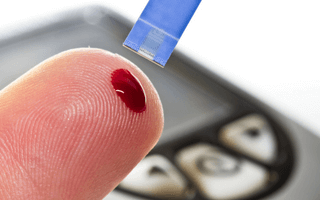

Diabetes (Diabetes Mellitus) is defined as a metabolic disorder, resulting in an increase in blood glucose concentration, and in extreme cases an increase in the glucose levels in the urine.
The World Health Organization (WHO) defined several types of diabetes: Diabetes Type I (Youth Diabetes), Diabetes Type II (the most common and wide-spread type – approximately 90% of diabetes patients) and Pregnancy Diabetes.
All diabetes types are a result of failure in the production of Insulin and/or decrease in its physiological action on the t
issues on which it affects: the muscle, liver and fat tissue.
The normal physiological mechanism of glucose absorption from the blood stream is mediated by the insulin hormone. This hormone is secreted from pancreatic beta cells as a reaction to food consumption.
The insulin is in charge of the glucose absorption through the exerting muscle cells, the liver cells (that
store them as glycogen, a glucose reserve, available between meals and during the night fast) and the fat tissue (in the event of excessive eating).
The insulin is secreted after a meal in reaction to increased blood glucose levels (any food we eat, is broken down into sugar, even protein or fat are broken down and are utilized by the body to produce sugar) and mediates the glucose entry into the cells.
The brain and nerve system functions require a constant supply of glucose in order to maintain normal physiological functions, therefore, the blood glucose levels during fasting should remain in the narrow margin between 80 and 100 mg/deciliter. The liver breaks down the glycogen reserves during fasting, between meals and during the night sleep. In addition, when the hunger sensation is extended, the body breaks down the fat reserves and when the diabetes disease is on a severe, the muscle proteins are broken down as well.
During the fattening process (typical in Adult Diabetes) the body tries to deal with blood sugar surpluses by excess secretions of insulin. Following prolonged exposure to high levels of Insulin, a decrease in sensitivity to it is experiences (“Latent” diabetes), so that the amount of secreted Insulin is no longer effective (Insulin resistance). As result of that, the blood glucose levels start to rise, and often a rise in blood fat levels is also evident.
High levels of blood glucose for extended periods of time harm the function of the blood vessels through creations of free radicals and development of sclerotic layers (accumulation of blood fats over the blood vessels walls that block their shaft).
The blood vessels with the largest potential of being damaged include the coronary veins arteries, feeding the heart muscle (cardiac episode) the neck arteries (brain stroke) the blood vessels of the eye retina (blindness) the kidney (kidney failure) the reproductive systems (impotence) and the nerve fibers (particularly those responsible for sensation in the lower limbs).
Another significant expression for diabetic damage is the appearance of “diabetic ulcers”, mainly on the feet. These ulcers tend to get easily infected, have slow healing rate and may result in gangrene (which requires surgical amputation).
The first symptoms that appear upon the beginning of onset of diabetes include: increased thirst and sensation of dryness of the mouth, extensive urination (mainly at night) accompanied by a pungent odor, fatigue after light exertion compared to the past, sensation of intense hunger between meals accompanied by “drop” in sugar levels between meals, manifested by sweating, nervousness, rapid pulse and haze.
Early diagnosis is a highly important factor (the stage in which there is a decrease in insulin tolerance) for treating it upon its manifestation and constant ongoing balancing among chronic patients. Upon the progression of the illness, there is a decrease in the quantity of secreted insulin, in which stage the common practice is to integrate Insulin treatment from an external source.
Most conventional medications given through oral administration have known side effects. Medications administered through injection are often treated with low response levels by patients.
In addition to nutrition, characterized by a significant reduction of sugars and carbohydrates from the menu, abundant drinking and daily physical activity, CuraLin assists the body in an improvement of the glucose levels balance.
Those treated with medications should consult with their physician prior to beginning to take the supplement.
Thank you for reading. The CuraLife team.

Our newsletter is packed with valuable insights, including expert guidance on managing chronic health conditions, tips for maintaining a healthy lifestyle, and updates on the latest breakthroughs in medical research.